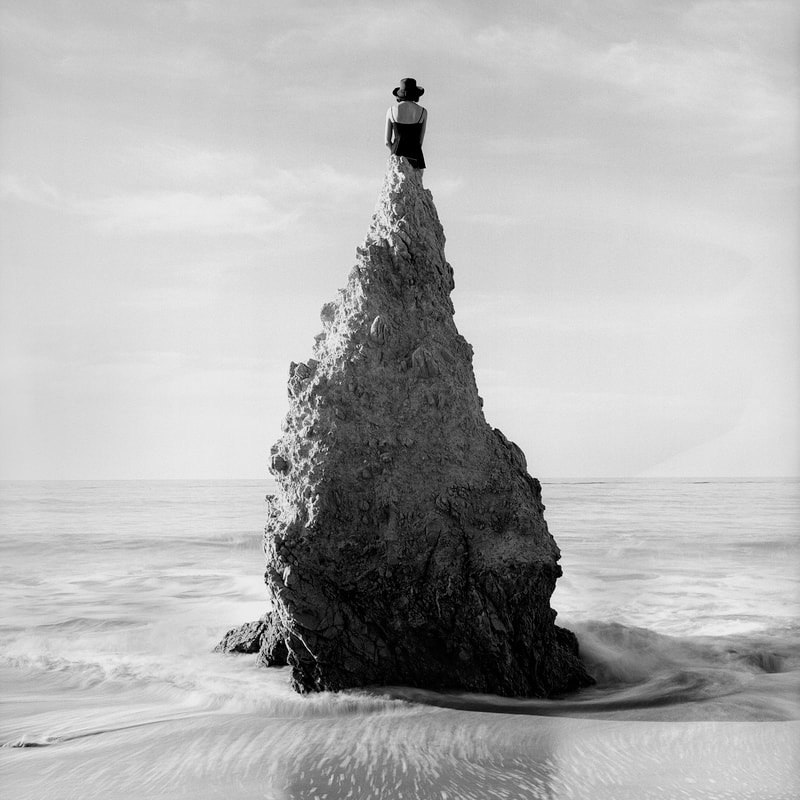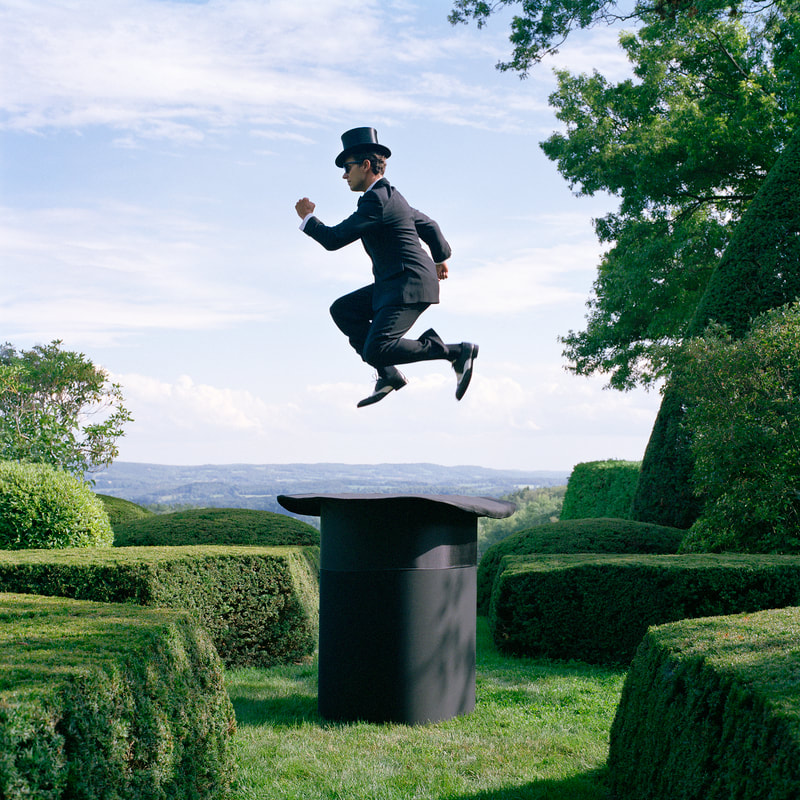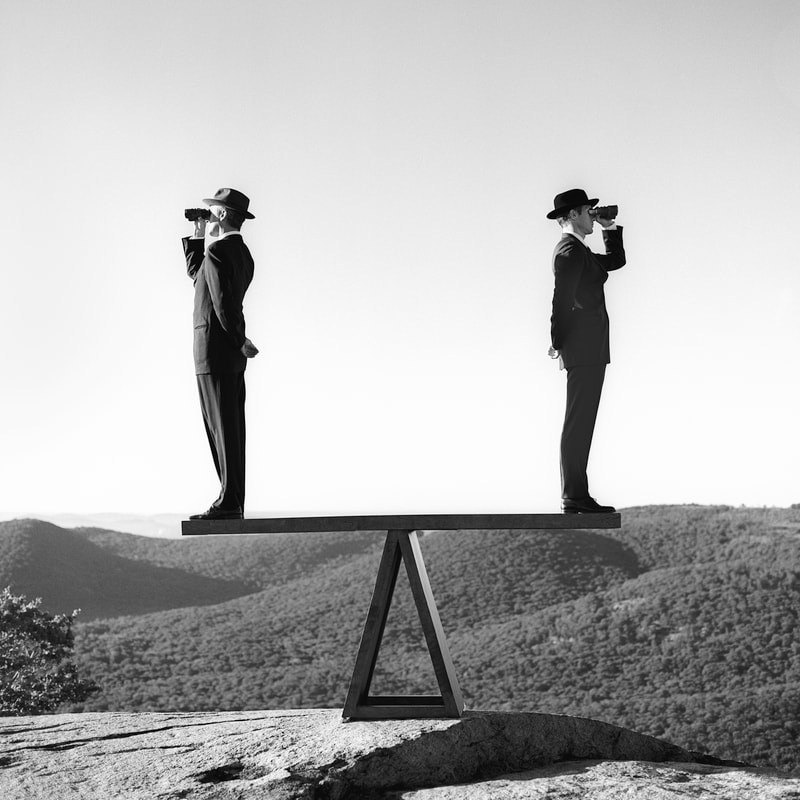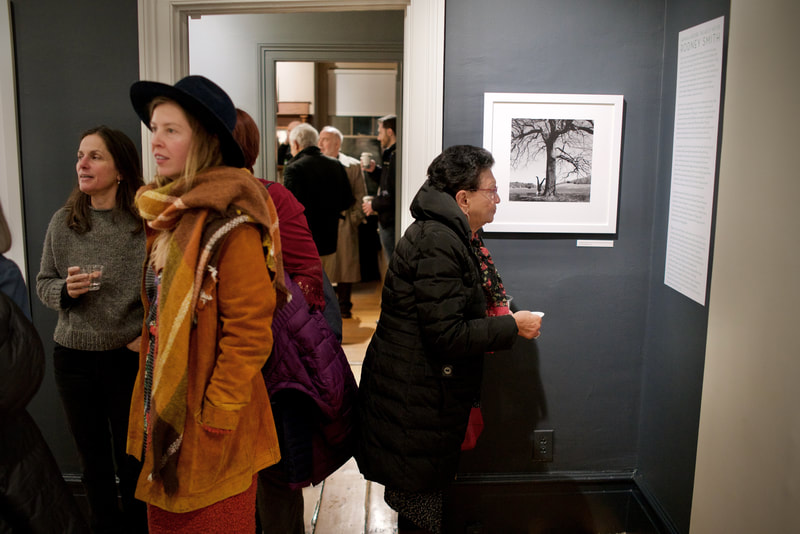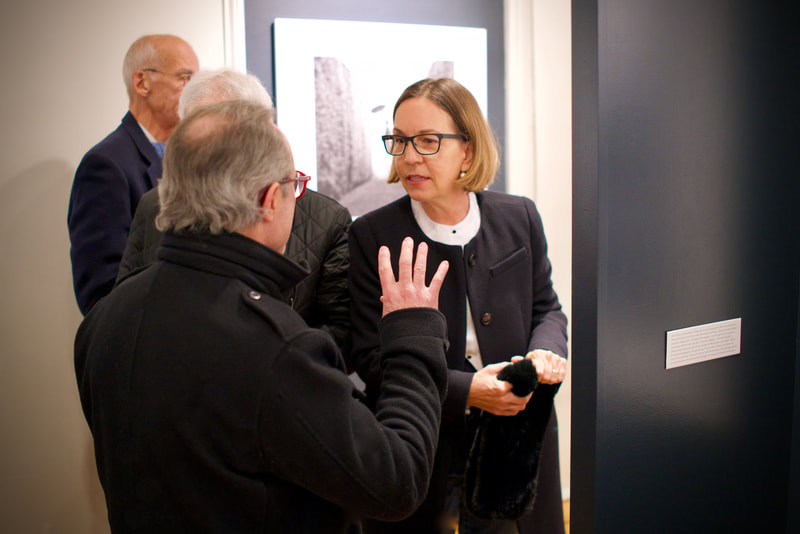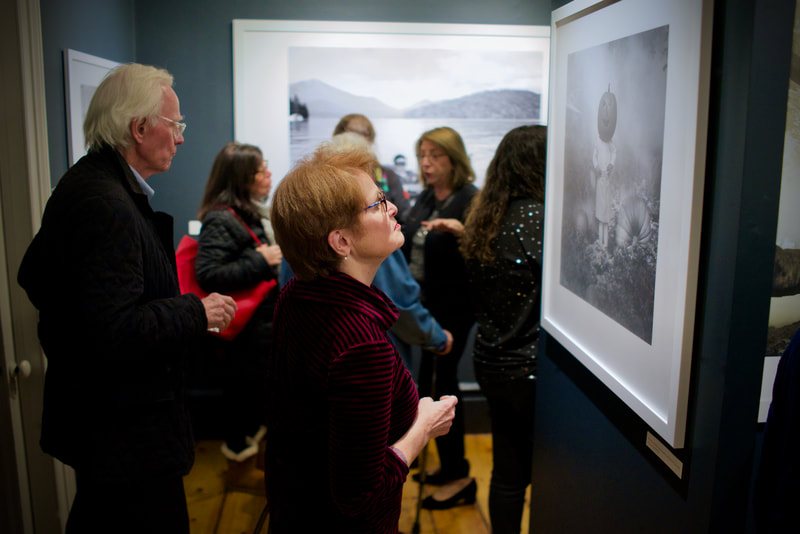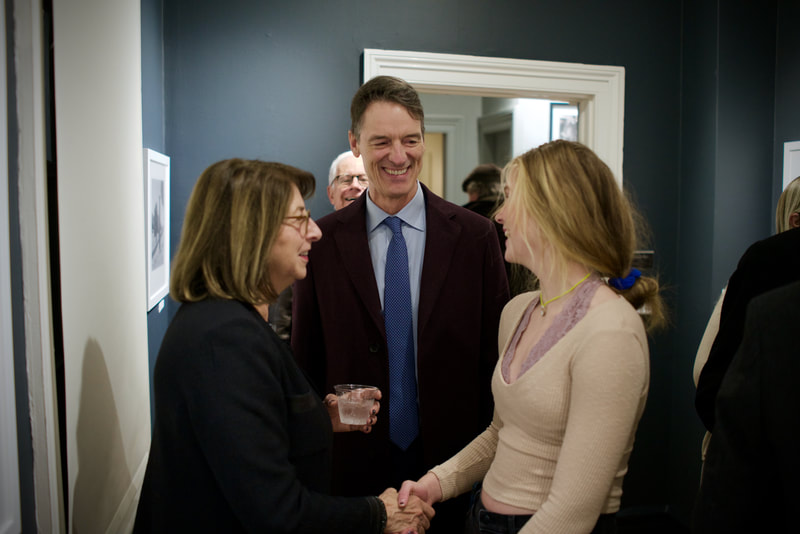Curated by Leslie Smolan
December 7, 2019 – March 8, 2020
Members Opening & Reception: Friday, December 6, 2019
The Edward Hopper House Museum is pleased to present Human in Nature: The Art & Wit of Rodney Smith, from December 7th, 2019 – March 8th, 2020. The exhibition features 20 black & white and color photographs, illustrating Smith’s enduring love affair with nature. Smith’s magical images are instantly recognizable for the way they combine surrealism, style and humor, in the first major US exhibition of his prints since his untimely passing two years ago.
Museum Director Jennifer Patton writes, “Every few years a photographer emerges on the world stage with a unique voice and vision that immediately sets their work apart from anyone else. Cartier Bresson, Richard Avedon, Irving Penn, Annie Leibovitz…each has a style and approach that defines their era and distinguishes them from other talented but more predictable image makers. Rodney Smith’s extraordinary photographs are destined to join the ranks of these masters.”
Smith’s art is his response to the world – an attempt to bring order out of chaos, understanding out of confusion, wisdom out of ignorance and beauty out of despair. Human nature and humans in nature are two entirely different propositions. Regrettably, destroying nature is clearly part of human nature. Trying to improve upon nature also comes naturally to people, as humans attempt to make nature less unruly. It’s partly a desire to organize our environment, partly an attempt to one-up God. As a graduate of the Divinity School at Yale, none of this was lost on Smith, an enlightened agnostic whose life-long contemplation of humankind’s relationship to God and nature bled into his photography. “The secret for me in all my photographs is the location, using the environment as a studio, editing with light. I’m always attracted to a location where the hand of man is apparent.”
In his catalog essay, curator WM Hunt takes this idea one step further: “Smith deals with the landscape expertly. His hedges and walls of ivy are lushly textured; the blacks and whites lay out sharply. The shadows are deep and rich. These are whimsical photographs sited in meadows and forests with deep perspective, a mash up of Smith’s mentor, Ansel Adams, and Cecil Beaton.”
A longtime resident of Snedens Landing, Smith lived and worked in the same environment that shaped Edward Hopper. Similarities in their art abound – an exquisite sense of design and composition, the use of light and shadow to create mystery and narrative, and the perfect integration of figure and landscape. Hopper once said, “Great art is the outward expression of an inner life in the artist, and this inner life will result in his personal vision of the world.” Smith was not only looking for meaning in his own life but for what it means to be human. Photography was his way of knowing himself and thereby knowing others.
Rodney Lewis Smith (1947 – 2016) was born in New York City to a wealthy, demanding fashion executive. Smith rejected his early upbringing by studying theology. Graduating from the University of Virginia in 1970, he went on to earn a Master’s Degree in Divinity from Yale University, while also studying photography under Walker Evans. His work has been seen everywhere, from the NY Times Magazine, Vanity Fair and Departures to Architectural Digest. Smith passed away unexpectedly at age 68, leaving behind a large archive of work now being discovered. His photography is collected by major museums, including the Museum of Fine Arts, Boston, Philadelphia Museum of Art and the Houston Museum of Fine Arts, and by individuals around the world.
December 7, 2019 – March 8, 2020
Members Opening & Reception: Friday, December 6, 2019
The Edward Hopper House Museum is pleased to present Human in Nature: The Art & Wit of Rodney Smith, from December 7th, 2019 – March 8th, 2020. The exhibition features 20 black & white and color photographs, illustrating Smith’s enduring love affair with nature. Smith’s magical images are instantly recognizable for the way they combine surrealism, style and humor, in the first major US exhibition of his prints since his untimely passing two years ago.
Museum Director Jennifer Patton writes, “Every few years a photographer emerges on the world stage with a unique voice and vision that immediately sets their work apart from anyone else. Cartier Bresson, Richard Avedon, Irving Penn, Annie Leibovitz…each has a style and approach that defines their era and distinguishes them from other talented but more predictable image makers. Rodney Smith’s extraordinary photographs are destined to join the ranks of these masters.”
Smith’s art is his response to the world – an attempt to bring order out of chaos, understanding out of confusion, wisdom out of ignorance and beauty out of despair. Human nature and humans in nature are two entirely different propositions. Regrettably, destroying nature is clearly part of human nature. Trying to improve upon nature also comes naturally to people, as humans attempt to make nature less unruly. It’s partly a desire to organize our environment, partly an attempt to one-up God. As a graduate of the Divinity School at Yale, none of this was lost on Smith, an enlightened agnostic whose life-long contemplation of humankind’s relationship to God and nature bled into his photography. “The secret for me in all my photographs is the location, using the environment as a studio, editing with light. I’m always attracted to a location where the hand of man is apparent.”
In his catalog essay, curator WM Hunt takes this idea one step further: “Smith deals with the landscape expertly. His hedges and walls of ivy are lushly textured; the blacks and whites lay out sharply. The shadows are deep and rich. These are whimsical photographs sited in meadows and forests with deep perspective, a mash up of Smith’s mentor, Ansel Adams, and Cecil Beaton.”
A longtime resident of Snedens Landing, Smith lived and worked in the same environment that shaped Edward Hopper. Similarities in their art abound – an exquisite sense of design and composition, the use of light and shadow to create mystery and narrative, and the perfect integration of figure and landscape. Hopper once said, “Great art is the outward expression of an inner life in the artist, and this inner life will result in his personal vision of the world.” Smith was not only looking for meaning in his own life but for what it means to be human. Photography was his way of knowing himself and thereby knowing others.
Rodney Lewis Smith (1947 – 2016) was born in New York City to a wealthy, demanding fashion executive. Smith rejected his early upbringing by studying theology. Graduating from the University of Virginia in 1970, he went on to earn a Master’s Degree in Divinity from Yale University, while also studying photography under Walker Evans. His work has been seen everywhere, from the NY Times Magazine, Vanity Fair and Departures to Architectural Digest. Smith passed away unexpectedly at age 68, leaving behind a large archive of work now being discovered. His photography is collected by major museums, including the Museum of Fine Arts, Boston, Philadelphia Museum of Art and the Houston Museum of Fine Arts, and by individuals around the world.
RELATED PUBLIC PROGRAMS
Saturday, January 25th, 2020, 2-3pm
Art Talk at the Nyack Library with Leslie Smolan
Leslie Smolan, one of the founders of international branding agency Carbone Smolan, had a 30-year collaboration with Smith, both as his wife and creative partner. She offers insights into his work, his inspirations and techniques, in addition to telling stories about the artist that only an insider would know.
Alongside this exhibition, Edward Hopper House is pleased to present intimate glimpses of Hopper’s life captured in photos from the Sanborn-Hopper Family Archive. This exhibition is on view all winter as we celebrate the powerful art of photography.
Art Talk at the Nyack Library with Leslie Smolan
Leslie Smolan, one of the founders of international branding agency Carbone Smolan, had a 30-year collaboration with Smith, both as his wife and creative partner. She offers insights into his work, his inspirations and techniques, in addition to telling stories about the artist that only an insider would know.
Alongside this exhibition, Edward Hopper House is pleased to present intimate glimpses of Hopper’s life captured in photos from the Sanborn-Hopper Family Archive. This exhibition is on view all winter as we celebrate the powerful art of photography.










